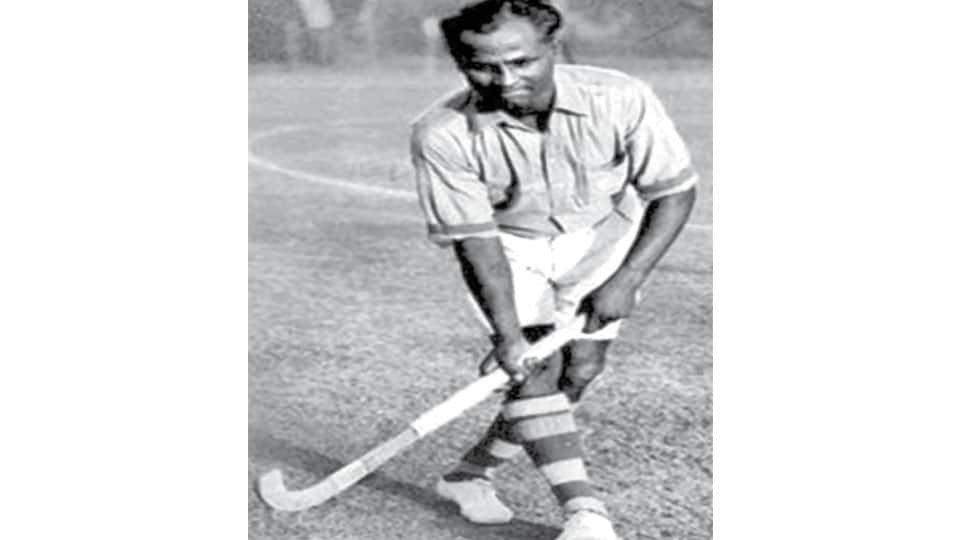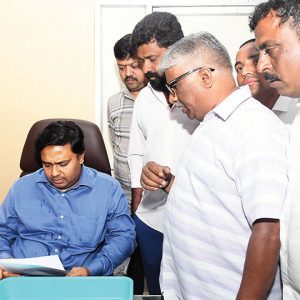The wizards of Indian Hockey as seen in the earlier Olympics
By Dr. K.B. Chinnappa, Sports Scientist
India is one of the foremost hockey playing countries of the world. The game was introduced to India by the Britishers during their colonial hold. The native Indians picked up the game so fast and with such high quality that in their very first appearance in the 1928 Amsterdam Olympics, they were victorious. The Indians maintained their winning spree Olympics after Olympics till the 16th Olympics at Melbourne in 1956. In all these six Olympics, India shot 168 goals conceding only 7 goals. The observations of foreign press on the skill, the will and the drill of the Indian players of 1928 Amsterdam Olympics and the 1932 Los Angeles Olympics are worthy to note.
A Dutch Journalist on the 1928 Olympics wrote:
“Up whistles the ball and they catch it on the out-side of their stick and there it lies, as if it is tucked away in a lady’s work-basket and they run away with it at express train speed, all the while the ball remaining peacefully, stuck to the end of the stick.”
“Up whistles the ball and they change its course in the air and it sticks to earth and gets taken along.”
“The Indian ball seems also ignorant of the laws of gravity. One of these tanned diabolical jugglers stares at the ball intently, it gets upright and remains suspended in the air. It only proceeds on its way when a player has bestowed an approved nod on it.”
“An Indian hockey ball defies the laws of velocity and has never learned that the shortest distance between two points is the straight line. It is zig zag, a triangle or even a circle, never a straight line. Indian who stops the ball turns it by a magic stroke into a cube. The sphere is no longer round and lies immovably still like a block of beat-fuel, a cigar box or a child’s building block.”
Regarding fitness (Drill) the journalist went on to say:
“During the interval, Europe reclines in the drawing room having its little knees, muscles and tendons massaged. Whereas India stands and chats in the raw cold, stick under the supple arm sucking its lemon. Two worlds wide apart.”
All these write-ups show that this is no longer the game of hockey. It is a jugglery turn. Splendid indeed. When the Indian hockey team sailed to Los Angeles in 1932 for the 10th Olympics, the Indian team was to be received with a big banner, reading:
“Hockey Kings arrive to-day.
They will be accompanied by their many wives.
There are two lions in the Team.”
The first line was quite appropriate. The second line was definitely mischievous and the result of a misconception among the Americans that just like every Indian Maharaja having number of wives, every Indian will have many wives. The third line was given in lighter vein. It meant two Singhs or Shers, Gurmit Singh and Rup Singh.
Rightly, hockey kings set a world record by scoring 24-1 against an American team. Out of 35 goals, Dhyan Chand and his brother Rup Singh scored 25 Goals.
Dhyan Chand was scoring goals after goals weaving, faking and feinting through the defenders putting the ball into the goal cage. The spectators wanted him to change his stick as they suspected some adhesive material in the stick. Then he took his brother’s stick and played more eloquently. Again the spectators doubted every Indian stick to be like that. So they wanted Dhyan Chand to play with an opponent’s stick. He took an opponent’s stick and played brilliantly well. The crowd was so mesmerised, amazed and enamoured that they acclaimed “Wizard, Wizard.” Yes, he is one and only Wizard in Hockey in the World. A young girl was so enamoured by his game that she rushed to kiss him shouting “He is an Angel.”
In Vienna, Austria, there is a statue of Dhyan Chand with four hands and each hand holding a hockey stick. The control of ball as done by Dhyan Chand is possible only if a player has four hands with a stick in each hand. So good was the play of Indians that an American press suggested that in order to make the contest even, the Indians should have played left-handed or worn snow-shoes. “All the colour, glamour and pageantry of Rudyard Kipling’s India might have found its incarnation in the personal of the Indian team, which is to represent the Land of Mahatma Gandhi. So agile are the members of the team that they can run the full length of the field, juggling a small ball with the flat of the stick. A warning! Don’t get into the line of fire on a hockey field, for the hockey ball driven by forehand or the backhand is almost as deadly and as accurate as a cannon ball.” To sum up, hockey as played by the Indians was creme de-la creme of superlative hockey.
Earlier, the hockey playing countries literally learnt skill-ful hockey from India, either by inviting Indian players to coach their players, by inviting the Indian team to play against their teams or by fixing matches in India and observing the Indian type of play, through the video-taped recordings. The Indian players fell a prey to the incentives offered by the other countries unmindful of deteriorating standards of Indian hockey. Thus when other countries improved in leaps and bounds, India literally basked on the hang-over of the past glory and by the time India awakened, other countries improved so much that still India is struggling to catch up to the world hockey standard.
It is fervently hoped that the young and budding Indian hockey players, also those who play in the great Kodava Hockey Festival, take the clue of the SKILL, the WILL and the DRILL of our erstwhile hockey players and improve the quality of their game so that one day they may become world beaters.
[Ref: Ph.D thesis of Dr. Kalyatanda B. Chinnappa]








Recent Comments